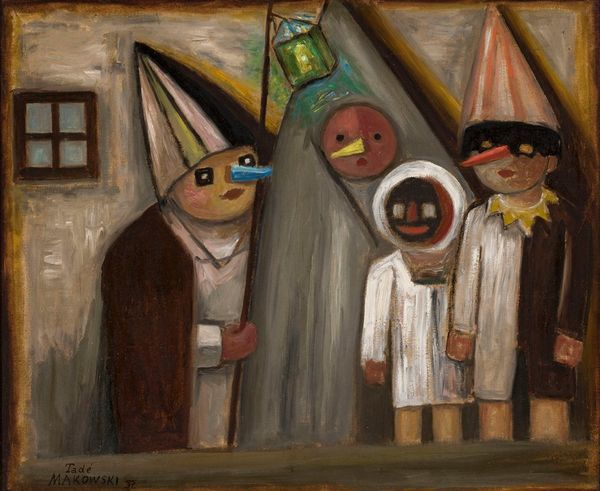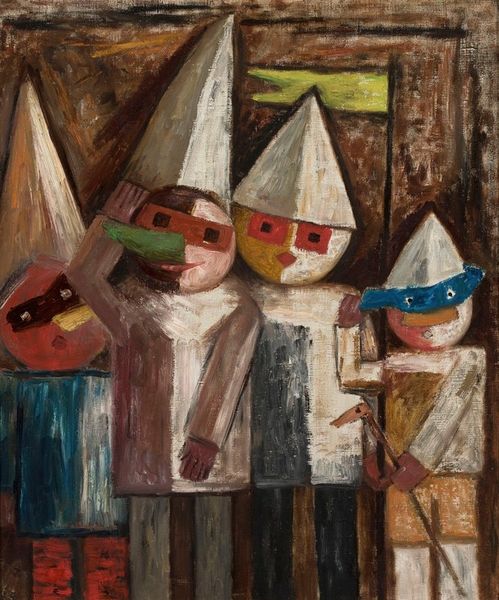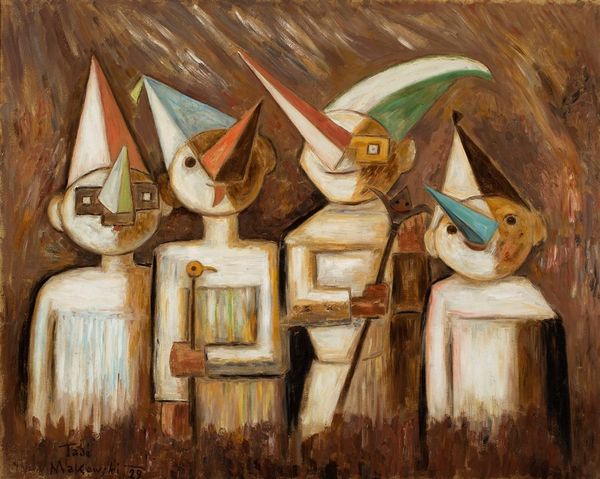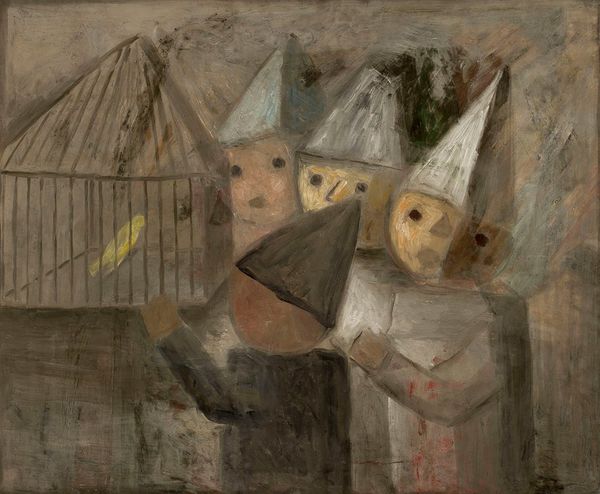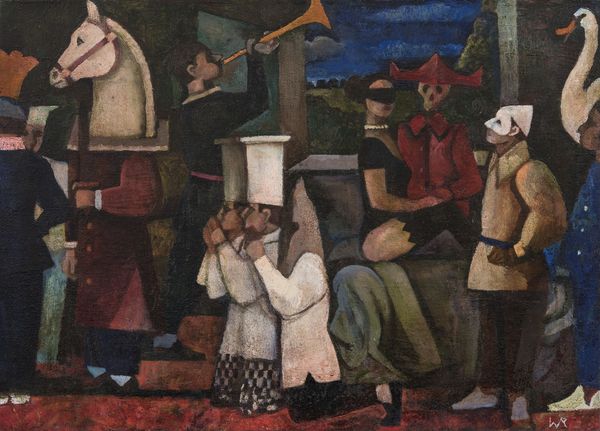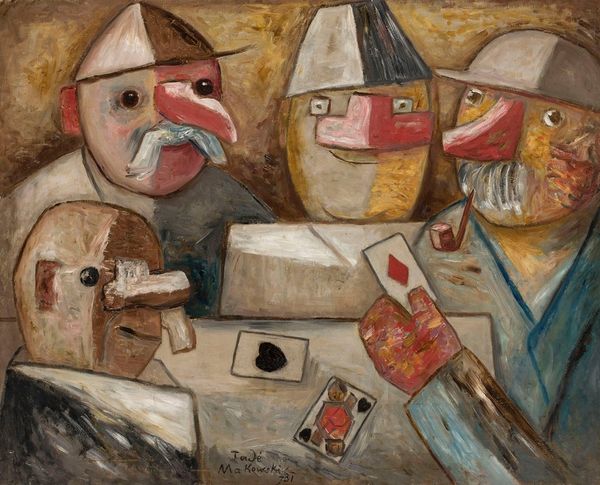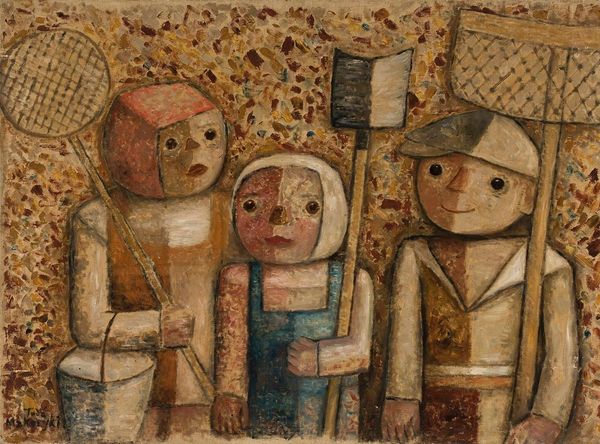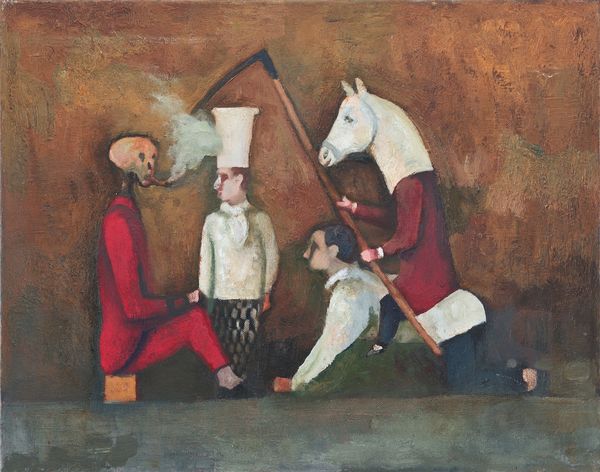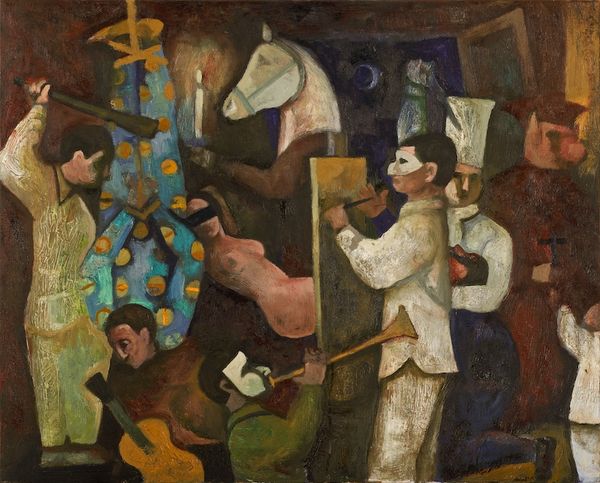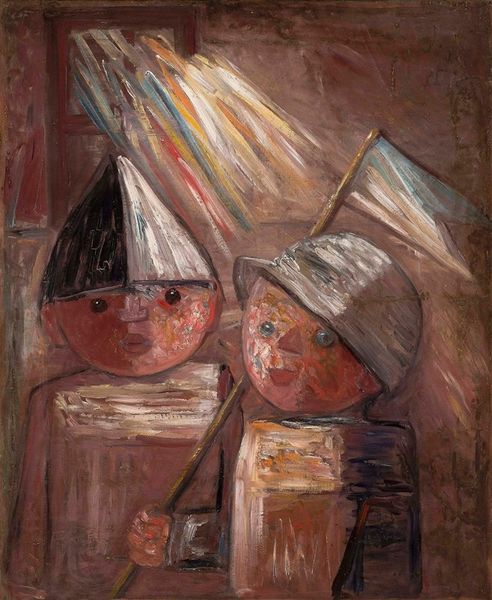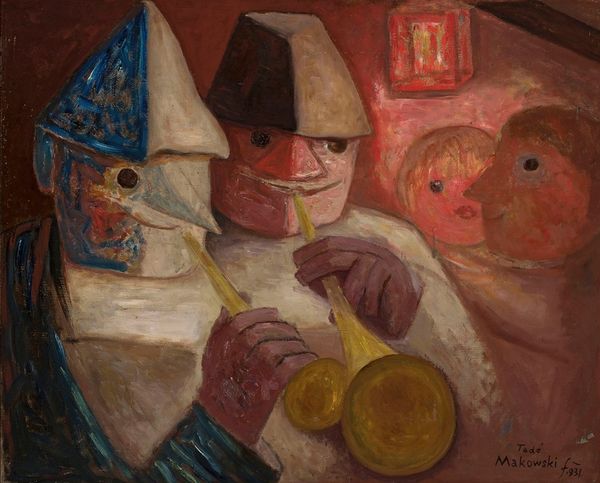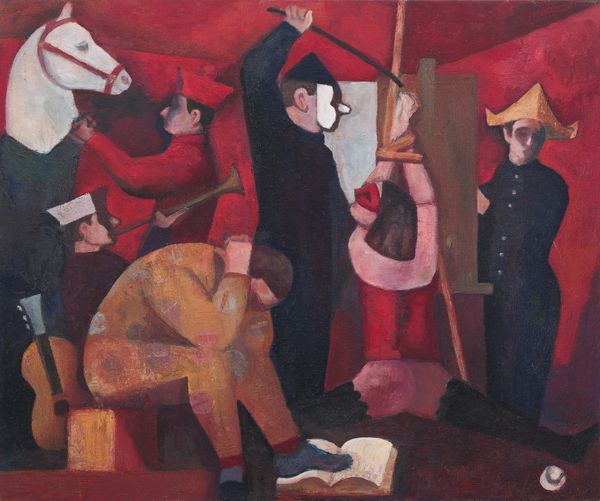
Copyright: Public Domain: Artvee
Curator: Tadeusz Makowski's 1931 painting, "Children's Theatre," immediately strikes me as a fascinating study in texture. The density of the oil paint application, the visible brushstrokes... it all suggests a very physical, almost sculptural, process. Editor: There’s an unsettling naivety, almost a kind of sinister innocence in this work, isn’t there? It’s giving me some major post-World War I anxiety, that period where childhood innocence was confronted with mechanized horror. Curator: Precisely. Looking at it from a material perspective, the palette itself contributes to that. These muted, earthy tones— browns, grays, creams —were typical of Makowski. But they also point to resource limitations or deliberate choices rooted in specific aesthetics. Were these pigment choices tied to material availability, perhaps a comment on socioeconomic constraints during this time? Editor: Well, let’s consider the figures themselves: they're these almost-robotic child figures dressed in Harlequin-like costumes, poised on a stage, underneath simple colorful flags. It’s as if they’re performing a play for a society teetering on the brink, mimicking it in a puppet show for some unseeable adult overseer. You can really read into the masks here: what are they hiding and why? What type of theater are they putting on? Are they aware they are tools of a societal machine? Curator: Excellent point. Makowski was known for using child figures frequently in his compositions; it speaks to his interests, perhaps obsessions. So what’s compelling here is how that motif is presented materially through those heavy paint applications. Do these crude marks evoke something related to his understanding of children as laborers, children's contributions and positions within communities in 1930's Europe? Editor: Absolutely, it also gives the artwork this sense of eternal, immutable artifice. They’re eternally performing their societal functions like mechanized cogs, hiding real desires, real longings for life and fulfillment and childhood experiences. Makowski really gives us here the sense of societal imposition and what happens when we attempt to build and enforce restrictive identities based on children’s appearances. Curator: This piece prompts us to think critically about how Makowski saw the world around him, a world shaped by production, material resources, and very real economic forces. It makes you think about children as "material," the physical manifestations of family survival. Editor: Yes, that dark undercurrent definitely encourages us to really re-evaluate childhood’s complicated position and implications in the sociopolitical context, then, as now. A childhood that we too frequently exploit and romanticize.
Comments
No comments
Be the first to comment and join the conversation on the ultimate creative platform.
